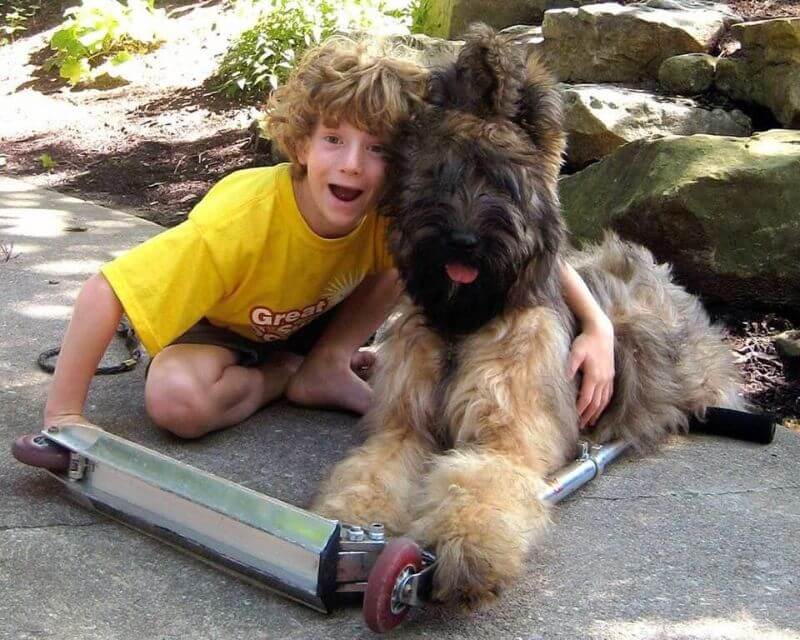Briard Socialization
Socialization is to help your dog to be friendly. Socialization is to help your dog be confident. Socialization is to help your dog like himself better. Socialization is to help your dog be a better citizen. Socialization is to help your dog be a better person all-around.
But What the Heck is Socialization?
Socialization is the exposure to constantly novel situations and stimuli. That means frequent change and intermittent challenges to routine. That means an onslaught of interaction with strangers in new and ever-changing locations with new and ever-changing sights, sounds, and textures.
Socialization can happen any time in life, but it is most effective during the critical periods of puppy development. These are the times when the foundation decisions are put in place during the most formative time in a canine’s life. Birth to 16 weeks is the critical period, but any dog can benefit from socialization even later. Its greatest importance happens during the critical periods since the seeds of adult decisions and outlook are planted then. Socialization is always important for all dogs, but the herding/working/guarding breeds have a particular need to help them fit into societal expectations in urban environments.
The Briard takes its place among breeds that are typically content to not know anyone or anything new, and not let anyone in or out of the house. The Briard would be happy to exist in an environment with a limited social circle of familiar family friends… and no one else. We do, sometimes, see the less typical members of the breed who are naturally extroverted and socially indiscriminate, but the average is more cautiously judgmental than that.
The role of socialization is to blunt the naturally discriminate behavior and to condition more outgoing social behavior.
There is no such thing as too much socialization. There is no such thing as taking your dog to too many places or exposing him to too many changes.
In the first year of the average Briard’s life, the puppy should meet and greet, and be touched by, at least 50 new people a month in a minimum of 20 new places/situations. That includes flea markets, shopping centers, farmers’ markets, the vet, dog classes, dog parks*, Home Depot, the dry cleaners, video store, outside dining… you get the drift. Classes are a wonderfully concentrated way of accomplishing much of this; however, the situations/places need to be novel to be most effective.
The final detail, which is critical in socializing, is making the dog enter into and remain in a stranger’s personal space. The ideal is to have the dog lean into and remain in the close personal space of each new person as the dog is petted and given a chance to relax and connect there. In our training and raising of Briards, we literally teach the dogs a command directing them to walk over into the new person’s personal space and linger there to receive the reinforcement. Here we are conditioning and patterning behavior which improves sociability and social confidence.
*I am not a proponent of dog parks. You become a sitting duck, prey to the people who mismanage badly behaved or dangerous dogs. It puts you and your dog at risk.








